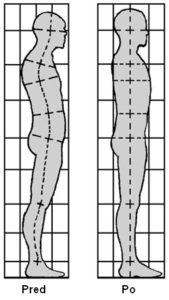
Soft tools can achieve all the potential benefits of massage: increased relaxation, proprioception, pain-relief, and circulation, reduction of inflammation, and sometimes, manipulation and restructuring of connective tissue.
However, there are certain cases where soft tools don’t get the job done, or at least don’t do as well as hard tools do to achieve the desired effect. This is especially true for manipulating connective tissue that has solidified to the point that a large amount of force is required to create changes.
Leave the Hard Stuff to the Pros
There’s a reason why your dentist uses the sharp, scary looking tools and why you use a toothbrush with soft plastic bristles: hard tools are… hard to use (at least correctly).
The professional tools can be effective, but they are both risky and difficult to use, as they are specialized tools for a specialized purpose, and as such, they require skill and precision to use well.

If your tissues are really stiff and softer tools are not effectively providing any change, then harder tools may make sense, but for the reasons discussed in the previous parts of this series, they shouldn’t be the default for most people.
Using a soft, squishy massage ball, for example, is kind of like brushing your teeth: once you’ve been taught how to use it, there is very little risk, and you can intuitively figure out how to use it to achieve most of the daily “hygiene benefits.”
In fact, hygiene is a way to think about connective tissue health. Following this oral-hygiene analogy can illuminate the parallels…
Preventive Maintenance
It’s much easier to prevent a cavity than it is to treat one once it has already formed, right? We brush our teeth every day as to prevent the build up of unwanted plaque. Once the plaque or cavity has developed, most of us don’t try to remove it — we see a specialist — the dentist.
Even if we don’t think we have cavities, most of us visit a dentist for a regular cleaning and a check-up to make sure we haven’t developed any issues we were not aware of.
Similarly, our daily connective tissue hygiene is first and foremost a preventive measure against the build up of unwanted fibrosis (aka stuck together connective tissue, which leads to lack of mobility and proprioception) than it is to treat it once it has already formed.
And similar to check ups with a dentist, it is probably a good idea to see a professional every once in a while to see if you’ve developed any “movement plaque” that hasn’t quite turned into a “movement cavity” yet.
With your teeth and you connective tissue, once you’re already in pain, it’s probably too late for preventive measure; now, you need a specialist to fix the problem(s).
A manual therapist serves the role of a professional for connective tissue the way a dentist does for dental health. A manual therapist can be a generic bodyworker, massage therapist, chiropractor, or another hands-on professional.
Personally, I have had the best results, in terms of creating sustainable changes to the health of my connective tissue and the ways it affects my posture, movement, pain, and performance, being treated by a Rolfer. Rolfing, or Structural Integration, is a specific form of manual therapy developed by biochemist Ida Rolf that aims to systematically manipulate and reorganize connective tissue and fascia.
Rolfing is often symbolized in images like this one, showing before and after versions of a body’s alignment with gravity in space.
Note: This is, like most of my analogies, oversimplified. There are several ways that oral hygiene and connective tissue hygiene are different — but if we start to think about our personal role in connective tissue hygiene in the same way we do our oral hygiene, prioritizing consistent daily self-care, I believe we can save ourselves the hassle of dealing with the equivalent of connective tissue cavities.
Next week marks the end of my series on hard and soft massage tools; come back to see my recommendations on making the most of harder tools to treat yoself to self massage.












I’ve been dealing with chronic pain in my right shoulder for over two months now, slowly massaging it with the tune up balls. This article is repeating to me what I’ve been thinking for a while now, its that I need to enlist the professionals to help dig deeper to find out why it is inflamed, and to help with what to do about the inflammation… It might also be time to schedule a dental cleaning its been over a year! 😉 Thank you for sharing.
Great analogy! My grandparents are dentists, so it makes a lot of sense to me. Also very informative with Rolfing. Never heard of that before, but def gonna look into it.
I really like the idea of preventing instead of only treating. That’s a big mistake we all tend to do, we only take care of ourselves when in pain… what if we would take care of our bodies when not in pain 🙂
I just love your analogies! Thank you for your great articles and for delivering them in so many ways to make these concepts so easy to understand. Thank you also for bringing to attention how we can and why we should be proactive in taking care of our own connective tissue hygiene, with the proper tools of course. : )
The analogy with oral hygiene makes sense to me. Do your selfmassage for muscles and fascia as prevention or maintenance after a professional treatment, aka the deeper work with ‘harder tools’. And probably decrease your visits to this professionial with your softer tools like the ytu balls. I can use this analogy/explanation to my students for the ‘why’ of selfcare, thank you!
Great analogy as I catch myself convincing myself that a chronic tight spot ‘ will go away’ without any outside help from a professional. Fortunately, daily rolling helps me to know when it’s time for a massage or a chiropractic adjustment. And for me daily rolling has really helped reduce those visits as well.
I know someone who had some Rolfing done and it sounded intense. Your post has made me curious to know more about it. I think the analogy to the dentist sounds pretty apt.
This is such a great way to explain the importance of maintenance. I find patient (and self) compliance to be one of the most difficult obstacles on our road to pain free living. This is a great way to remember that we need to “floss and brush” our tissues just like our teeth on a daily basis!
I tell my bodywork clients they can often get the same benefits with less pressure, and my yoga clients that they can get the same benefits from the pose by taking a modification.
Enjoyed reading this post, knowing when we can only go so far in self maintenance. Seeking professional helps can take us to the next level in self care.
I agree, YES sometimes we may need Hard Stuff from the Pros.
As long time yoga practitioner/teacher and Massage Therapist, I had suffered constant sciatica pain from rigorous yoga practice for several years in my 30’s. My recovery was form 10 Rolfing session (corrected lordosis and gained 1cm in hight) and taking a brake from rigorous asana practice for several months.
Now found YTU and Therapy Balls, soft tools in my late 50’s, I wonder if I was able to prevent the sciatica problem if I had known the Therapy Balls.
Yesterday I wake up with sciatica pain behind my left knee. worked on piriformis with Original Therapy Ball, but didn’t help at all, but worked on left QL with Alpha Ball which completely removed the pain. Soft vs Hard.
Happy to have soft tools with me for rest of my life.
This is such an interesting take on needing more than the therapy balls. Often times my shoulders are so tight it feels like bone. I’m defiantly looking into the Rolfer option, just in case the therapy balls aren’t bringing enough heat. Thank you!
What a helpful analogy, Max! Do you have any recommendations of what to look for when finding a Rolfer near me?
Great article. I like the cavity analogy. I have been recently using the Corgeous ball on my rib cage and decreasing the pain in some sticky spots.
Great post and great advice! Maintain your soft tissue with appropriate self-care and see an appropriate professional when you need deeper work done.
Great analogy to teeth and the work a dentist does. Toothbrush => soft tools. Preventative medicine is always the best medicine.
Makes sense! Brushing your teeth too hard can also create receding gums and a whole slew of other problems. Best to prehab instead of rehab.
I agree with the analogy to oral hygiene and care. There is a great emphasis on dental care for kids growing up now. The forms showing dental compliance are required at the elementary level. Similarly, kids are getting braces younger and younger. However, there also seems to be a decline in overall movement in that demographic due to significant tech use. Thus, the need for greater movement and use of the manual care and self-care.
I am really finding great release using my Yoga tune up balls – but when it comes to graston technique I’ll take your advice and seek out a professional
Max, you make reading blogs about complicated issues so much easier to do – it helps to relate seeing a manual therapist to treat my connective tissue the same way I would see a dentist to treat my teeth. Thanks!
Thank you Max for the article! I have read most of your articles and need to say that I like how simply and clearly you explain the differences between hard-soft tools. There is always something easy to keep in mind and to share with the students to answer their questions about why using Therapy Balls. Like the comparison of oral care and tissue care 🙂
Nice analogy! I will go to your earlier blogs to know your thoughts on hard rolling tools.